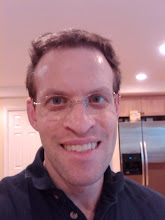More on the journey...
Before, during, and after the second CPAP/APAP trial, the doctor prescribed all the sleep narcotics. We started with clonazapan, moved to Norco, Halcion, Ambien, Lunesta, Rozerim, Remeron, Xyrem, and a few others. Since none of these sleep aids helped, I paid my first visit to the Stanford Sleep Clinic. I met with a sleep doc who suggested that I have a titration study. The doc also handed me a brochure for sleep surgery and suggested that I may consider seeing the local sleep surgeons who established the MMA. My impression from the Stanford doc was that the treatment plan was CPAP, surgery, next patient...
In 2004, I would not consider sleep surgery. I returned to my regular sleep doc, had the titration study (APAP @7-8), failed to get benefit, and abandoned CPAP for the second time. My sleep doc offered to write me a note to my employer prescribing daily naps - needless to say, I declined the nap pass. The doc said that I seemed highly functional and perhaps I could just keep going on as is. With no relief from my "wake up tired" syndrome, I decided to just "deal with it" and get through the days.
For the next three years, my sleep quality and quantity declined to the point where I slept four to six hours a night, woke up tired, and became even grumpier. As a last effort, I sought the advice the top doc at Stanford. It took only two days to get an appointment with the amazing physician. To make a long story short, the doc walks in the room, looks at my face, and tells me that my facial structures are all wrong, and they are going to need to break my jaw. WOW! He went on to explain that prior to surgery, there is a very specific protocol they follow - CPAP, phase I surgery, and ultimately phase II (MMA). He said the process would take several years. (He was right).
The doc ordered a titration study, and told me that he would see me the morning after the study. (Not only did he order the titration study, he walked me over to the scheduler and had my study scheduled the next week.) In addition to the sleep study, the doc also made an appointment for me to visit the the weekly surgery clinic after the sleep study.
When dealing with Stanford, prior to seeing the attending physicians on staff, you meet with a sleep fellow. The fellows are all post resident physicians, some directly from residency, others from private practice seeking advanced training in sleep medicine.
The morning after the sleep study, the fellow doc came in at 7:45 a.m. with a prescription for a bi-pap @ 15/11 and Ambien CR. By noon that day, I had my bi-pap.
I used the bi-pap with almost 100% compliance for about a year with no improvement. We regularly increased the pressure to a maximum of 21/17 with no improvement. The Stanford Doc had said that I need such high pressures since we were trying to overcome structural bone issues, and not simply splint the soft tissue in the airway. During the third PAP trial, I was able to tolerate the machine for 5-6 hours a night, but swallowed significant amounts of air. We eventually switched from straight bi-pap to auto bi-pap. The auto bi-pap didn't prevent swallowing the air.
About nine months into the bi-pap trial, I got n mandibular advancement device aka an oral appliance (the "Silencer"). The Silencer failed to improve my sleep quality and I developed TMJ like symptoms. I tried both the oral appliance along with bi-pap without success.
Not willing to give up on the promise of a good night's sleep, I made an appointment with THE sleep apnea surgeon. The surgeon suggested that I consider a tonsillectomy as the next treatment. He did not want to perform an UPPP as he felt that most OSA issues need to be treated lower in the airway. He performed the tonsillectomy. With no improvement in my sleep quality, he suggested that I try PAP treatment again. Once again, the PAP failed yet again to improve my sleep. As a next step, he referred me to another distinguished sleep doctor who was involved in a trial for the Ventus valves - a device you put over each nostril to create a positive pressure in your throat when exhaling.
More Doom and Gloom
The Ventus device failed me or perhaps I failed with the device. For another 6 months, I was resigned to being tired. Finally, determined to wake up rested, I made an appointment to return the most distinguished sleep doctor at Stanford. He suggested one last trial with APAP along with a Prilosec to prevent swallowing air.
The APAP trial failed and I returned to see THE sleep surgeon - MMA Scheduled for next week.
Monday, April 27, 2009
Subscribe to:
Comments (Atom)
